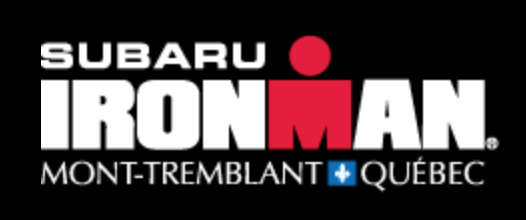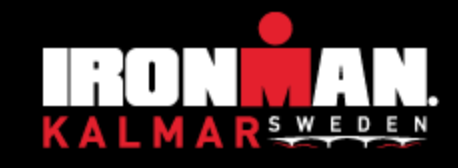Ironman Mont Tremblant 2015 (Aug 16th) – Predictions
 A number of these athletes are also on the start list for Timberman on the same day, so there’s going to be a number of changes to these lists.
A number of these athletes are also on the start list for Timberman on the same day, so there’s going to be a number of changes to these lists.
Previous Winners
| Year | Male Winner | Time | Female Winner | Time |
| 2012 | Romain Guillaume (FRA) | 08:40:48 | Jessie Donavan (USA) | 09:30:46 |
| 2013 | Luke Bell (AUS) | 08:26:06 | Mary Beth Ellis (USA) | 09:07:56 |
| 2014 | TJ Tollakson (USA) | 08:16:17 | Sara Gross (CAN) | 09:40:26 |
Last Year’s TOP 3
Male Race Results
| Rank | Name | Nation | Swim | Bike | Run | Time |
| 1 | TJ Tollakson | USA | 00:49:43 | 04:26:55 | 02:54:21 | 08:16:17 |
| 2 | Daniel Halksworth | GBR | 00:49:37 | 04:43:04 | 02:57:38 | 08:35:15 |
| 3 | Andreas Raelert | GER | 00:49:38 | 04:34:38 | 03:08:59 | 08:38:31 |
Female Race Results
| Rank | Name | Nation | Swim | Bike | Run | Time |
| 1 | Sara Gross | CAN | 00:58:42 | 05:28:14 | 03:07:33 | 09:40:26 |
| 2 | Amber Ferreira | USA | 00:58:40 | 05:19:58 | 03:18:33 | 09:43:46 |
| 3 | Beth Shutt | USA | 01:03:21 | 05:21:16 | 03:15:12 | 09:46:45 |
Course Records
| Leg | Gender | Record | Athlete | Date |
| Total | overall | 08:16:17 | TJ Tollakson | 2014-08-17 |
| Swim | overall | 00:47:45 | Brandon Marsh | 2013-08-18 |
| Bike | overall | 04:26:55 | TJ Tollakson | 2014-08-17 |
| Run | overall | 02:52:20 | Stefan Schmid | 2013-08-18 |
| Total | female | 09:07:56 | Mary Beth Ellis | 2013-08-18 |
| Swim | female | 00:49:22 | Haley Chura | 2013-08-18 |
| Bike | female | 04:58:18 | Mary Beth Ellis | 2013-08-18 |
| Run | female | 03:03:45 | Kim Schwabenbauer | 2013-08-18 |
Course Rating
The Course Rating for IM Mont Tremblant is 07:08.
Race Adjustments for IM Mont Tremblant
| Year | Adjustment | Swim Adj. | Bike Adj. | Run Adj. | # of Athletes | Rating | Swim Rating | Bike Rating | Run Rating |
| 2012 | 09:41 | -01:09 | 05:55 | 04:40 | 12 | 09:41 | -01:09 | 05:55 | 04:40 |
| 2013 | 04:17 | -00:35 | 03:13 | 04:09 | 32 | 06:59 | -00:52 | 04:34 | 04:24 |
| 2014 | 07:25 | -01:36 | 02:08 | 05:11 | 14 | 07:08 | -01:07 | 03:46 | 04:40 |
KPR points and Prize Money
IM Mont Tremblant is a P-2000 race. It has a total prize purse of 100.000 US$.
Male Race Participants
| Rank | Bib | Name | Nation | Expected Time | Rating | Exp. Swim | Exp. Bike | Exp. Run | Overall |
| 1 | 3 | Jordan Rapp | USA | 08:19:12 | 08:31:06 | 00:52:51 | 04:26:52 | 02:54:30 | 21 |
| 3 | 2 | Lionel Sanders | CAN | 08:31:13 | 08:48:29 | 00:56:51 | 04:25:09 | 03:04:14 | (85) |
| 4 | 5 | Justin Daerr | USA | 08:34:09 | 08:42:53 | 00:54:10 | 04:41:26 | 02:53:33 | 60 |
| 5 | 4 | Paul Ambrose | GBR | 08:37:11 | 08:49:44 | 00:50:14 | 04:37:22 | 03:04:35 | 89 |
| 6 | 9 | Trevor Delsaut | FRA | 08:39:56 | 08:47:14 | 00:54:16 | 04:46:35 | 02:54:05 | 77 |
| 7 | 6 | Matthew Russell | USA | 08:40:43 | 08:51:08 | 00:58:40 | 04:40:50 | 02:56:12 | 94 |
| 8 | 24 | Eric Limkemann | USA | 08:40:59 | 08:58:33 | 00:50:25 | 04:38:26 | 03:07:08 | (124) |
| 9 | 21 | Stephen Kilshaw | CAN | 08:44:08 | 09:14:17 | 00:54:11 | 04:46:30 | 02:58:26 | 195 |
| 10 | 8 | Christophe Bastie | FRA | 08:50:19 | 08:54:15 | 00:55:21 | 04:40:33 | 03:09:25 | 107 |
| 11 | 10 | Thomas Gerlach | USA | 08:53:02 | 09:08:04 | 00:55:37 | 04:43:09 | 03:09:16 | 161 |
| 12 | 20 | Chad Holderbaum | USA | 08:57:08 | 09:24:51 | 00:55:33 | 04:49:08 | 03:07:26 | 244 |
| 13 | 13 | James Chesson | USA | 09:00:51 | 09:26:45 | 00:57:39 | 04:52:32 | 03:05:41 | (249) |
| 14 | 19 | Nigel Gray | CAN | 09:04:51 | 09:15:46 | 00:55:42 | 04:48:04 | 03:16:05 | (203) |
| 15 | 25 | Jim Lubinski | USA | 09:12:10 | 09:39:59 | 01:02:39 | 05:00:52 | 03:03:39 | 302 |
| 16 | 27 | Brendan Naef | CAN | 09:13:06 | 09:35:03 | 00:58:56 | 05:00:36 | 03:08:34 | 284 |
| 17 | 28 | Patrick Wheeler | USA | 09:15:18 | 09:30:36 | 00:57:32 | 05:06:03 | 03:06:43 | 260 |
| 18 | 26 | Douglas MacLean | USA | 09:16:05 | 09:26:20 | 00:59:03 | 05:03:23 | 03:08:39 | 246 |
| 19 | 23 | Peter Kotland | CZE | 09:52:26 | 10:03:25 | 01:00:10 | 05:10:14 | 03:37:02 | 382 |
| 12 | Patrice Brisindi | CAN | n/a | unrated | unrated | unrated | unrated | (n/a) | |
| 14 | Brian Fleischmann | USA | n/a | unrated | unrated | unrated | unrated | (n/a) | |
| 15 | Jason Frank | USA | n/a | unrated | unrated | unrated | unrated | (n/a) | |
| 17 | Pierre-Yves Gigou | CAN | n/a | unrated | unrated | unrated | unrated | (n/a) | |
| 18 | Dylan Gleeson | CAN | n/a | unrated | unrated | unrated | unrated | (n/a) | |
| 22 | Adam Kosmicki | USA | n/a | unrated | unrated | unrated | unrated | (n/a) |
Lionel Sanders and Viktor Zyemtsev have already secured their Kona slots in July. In addition to them, there is a number of athletes looking to qualify in August:
- Paul Ambrose (3.095 but already 5 results – might be okay with a Top5, safe with a Top3 result)
- Matthew Russell (2.540 but 5 results), Jordan Rapp (2.180), Trevor Delsaut (2.065) Justin Daerr (1.840) – they probably need to win for a slot
Female Race Participants
| Rank | Bib | Name | Nation | Expected Time | Rating | Exp. Swim | Exp. Bike | Exp. Run | Overall |
| 1 | 36 | Mary Beth Ellis | USA | 09:11:22 | 09:17:15 | 00:52:07 | 05:01:08 | 03:13:08 | 9 |
| 2 | 38 | Liz Blatchford | AUS | 09:12:45 | 09:17:16 | 00:51:55 | 05:09:51 | 03:05:59 | 10 |
| 3 | 41 | Elizabeth Lyles | USA | 09:17:48 | 09:29:53 | 00:58:15 | 05:12:08 | 03:02:25 | 24 |
| 5 | 42 | Sarah Piampiano | USA | 09:24:57 | 09:37:19 | 01:02:29 | 05:07:22 | 03:10:06 | 44 |
| 7 | 54 | Lisa Roberts | USA | 09:28:41 | 09:34:29 | 01:05:54 | 05:14:11 | 03:03:35 | 37 |
| 8 | 37 | Jessie Donavan | USA | 09:33:50 | 09:39:52 | 01:08:02 | 05:05:28 | 03:15:20 | 47 |
| 9 | 35 | Sara Gross | CAN | 09:33:56 | 09:53:52 | 00:57:24 | 05:21:37 | 03:09:54 | 75 |
| 11 | 58 | Laura Siddall | GBR | 09:38:59 | 09:58:31 | 00:59:41 | 05:12:15 | 03:22:04 | 84 |
| 12 | 61 | Karen Thibodeau | CAN | 09:42:25 | 09:59:46 | 00:55:45 | 05:24:27 | 03:17:13 | 88 |
| 13 | 39 | Jackie Hering | USA | 09:46:32 | 09:56:18 | 00:56:34 | 05:25:15 | 03:19:43 | 80 |
| 15 | 44 | Anne Basso | FRA | 10:01:10 | 10:16:01 | 01:00:21 | 05:29:07 | 03:26:42 | 125 |
| 16 | 49 | Heather Leiggi | USA | 10:03:08 | 10:18:55 | 01:01:29 | 05:29:40 | 03:26:59 | 132 |
| 17 | 46 | Jacqui Gordon | USA | 10:06:05 | 10:19:16 | 01:01:56 | 05:24:12 | 03:34:58 | 135 |
| 20 | 53 | Tami Ritchie | USA | 10:10:28 | 10:35:04 | 00:53:41 | 05:40:50 | 03:30:58 | 165 |
| 21 | 56 | Maggie Rusch | USA | 10:28:06 | 10:49:18 | 01:04:39 | 05:35:45 | 03:42:41 | (174) |
| 23 | 51 | Caroline Martineau | CAN | 11:55:14 | 12:19:22 | 01:09:10 | 06:05:34 | 04:35:29 | (183) |
| 48 | Carly Johann | USA | n/a | unrated | unrated | unrated | unrated | (n/a) | |
| 52 | Carrie McCoy | USA | n/a | unrated | unrated | unrated | unrated | (n/a) | |
| 59 | Caroline St-Pierre | CAN | n/a | unrated | unrated | unrated | unrated | (n/a) | |
| 60 | Kathryn Thomas | USA | n/a | unrated | unrated | unrated | unrated | (n/a) |
With Mary Beth Ellis, Liz Blatchford and Liz Lyles the top three seeded are already safe for a Kona slot. A few others might still make it in August with a good result, but each of them already has five results:
- Sarah Piampiano (4.410 points, probably okay with a Top 5)
- Jessie Donavan (2.945), Jackie Hering (2.500) – they probably need a win for a slot
Winning Odds
Male Race Participants
Based on the previous results, Jordan Rapp is the clear favorite to win Mont Tremblant. He has taken a long time after his DNF in Texas to be in peak shape. Viktor has just won IM Canada in Whistler, he might be a DNF or at least a little tired. Paul Ambrose (DNF), Justin Daerr (3rd) and Matthew Russell (7th) were also racing in Canada:
- Jordan Rapp: 50% (1-1)
- Viktor Zyemtsev: 22% (4-1)
- Paul Ambrose: 13% (7-1)
- Justin Daerr: 9% (11-1)
- Matthew Russell: 2% (46-1)
- Trevor Delsaut: 2% (59-1)
Female Race Participants
With Mary Beth Ellis, Liz Blatchford and Liz Lyles there are three strong Kona contenders looking for their next Ironman win before racing in Kona. Carrie Lester is coming off a second place at Challenge Roth and Jessie Donavan was 6th in Canada. Sara Gross and Rebekah Keat are making a comeback after a long break from racing:
- Mary Beth Ellis: 34% (2-1)
- Liz Blatchford: 31% (2-1)
- Elizabeth Lyles: 11% (8-1)
- Carrie Lester: 9% (10-1)
- Sara Gross: 6% (16-1)
- Rebekah Keat: 5% (19-1)
- Jessie Donavan: 2% (63-1)

